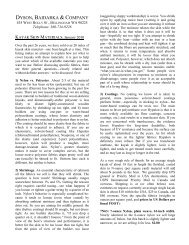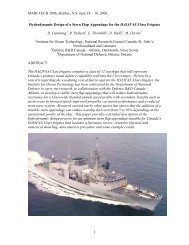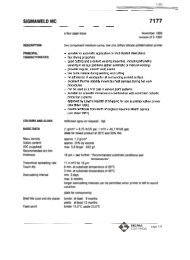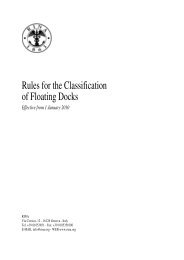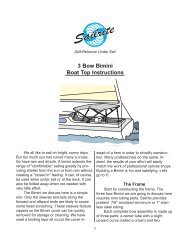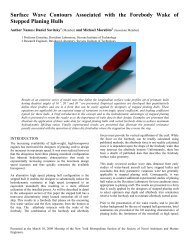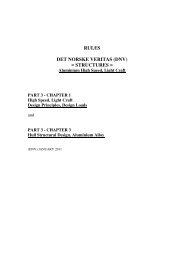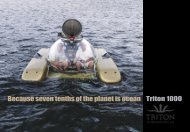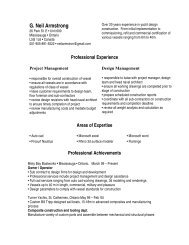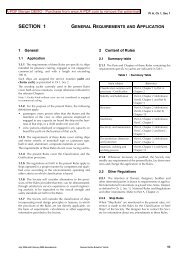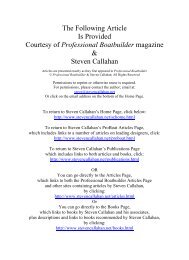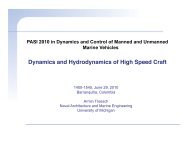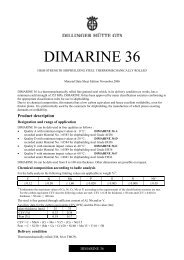Recent Applications of Hydrofoil-Supported- Catamarans - Boat ...
Recent Applications of Hydrofoil-Supported- Catamarans - Boat ...
Recent Applications of Hydrofoil-Supported- Catamarans - Boat ...
Create successful ePaper yourself
Turn your PDF publications into a flip-book with our unique Google optimized e-Paper software.
15However, the trials in Chile only gave a top speed <strong>of</strong> 22 knots. The deficiency waspartly traced down to come from additional drag <strong>of</strong> four large transom skegs fordirectional stability.The owners decided to choose the Hysucat foil system in spite <strong>of</strong> the higher resistancevis-à-vis the Hysuwac foil system because <strong>of</strong> shallow water conditions which did notallow the front foil <strong>of</strong> the Hysuwac to penetrate about 400mm below the keel line.With some correction on the skegs a top speed <strong>of</strong> 32,5 knots for the Hysucat waspredicted and a contract <strong>of</strong> Unistel Technologies (Pty) Ltd, the Stellenbosch University’sTechnology Transfer Company accepted for the Design and Technology package. Thedesign was subcontracted to FASTcc and the foil system built by Hydr<strong>of</strong>oil Manufacturers(Pty) Ltd in Gordon’s Bay who subcontracted to Hydrospeed (Pty) Ltd <strong>of</strong> Cape Town.The foils were installed in February 2001 and the following initial trials gave top speedreadings <strong>of</strong> 32 to 34 knots in relatively calm water after the report by Mr. Wopper <strong>of</strong>Alwoplast. In rough sea conditions (“confused sea”) the 18 knots at 2700rpm for thecatamaran became 22 knots at 2500rpm for the Hysucat.The faster ship showed some bow steering in strong winds and steering with too largejet rudder settings became necessary which indicated that the skegs were still too largeand counteracted the jet steering effect.Alwoplast is replacing the skegs at the moment with two steerable spate rudder-skegs inorder to steer the ship in future at speed by rudder and not by waterjets as the use <strong>of</strong>excessive waterjet nozzle steering leads to a thrust loss which can exceed 20% andwhich reduces the top speed immediately and which leads to increased fuelconsumption. Improved performance is expected soon.So far it can be said hat the Hysucat foil system has improved the ship considerably.The power ratio (transport efficiency!) e p without foil was determined on the base <strong>of</strong>the original trial results and wasNo foils: e p = 0,257 at a Froude Number FnD = 2,16With foils: e p = 0,166 at a Froude Number FnD 3,34which indicates an improvement <strong>of</strong> 35,4% in performance. In the situation for whichthe Hysucat top speed was only 32 knots the improvement is still 31,5%.So far, the “Molly” is the first Semi-Displacement catamaran with a Hysucat foil system.The foil system is complicated by the hull shape with round bilge to which the foilflanges have to be carefully adapted. The rearfoil is adjustable in attack angle by use <strong>of</strong>an oil-hydraulic actuator driven by the inboard high oil pressure supply <strong>of</strong> the waterjetsystem.



